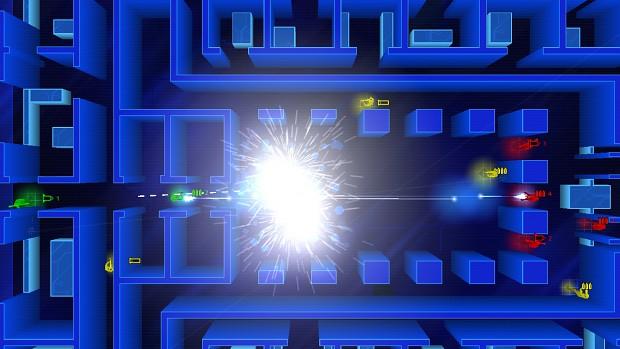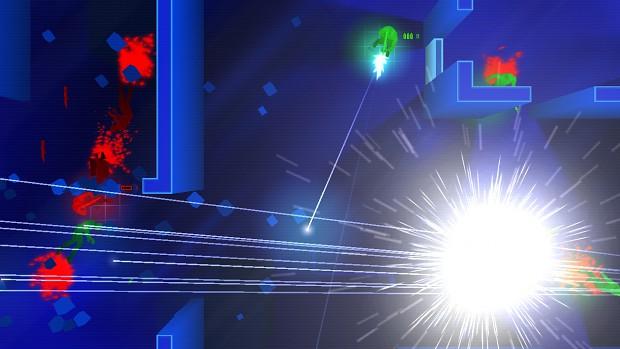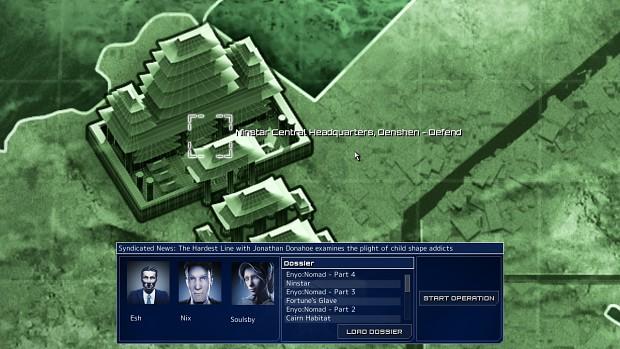- Wondering how to get Monopoly GO! free rolls? Well, you’ve come to the right place. In this guide, we provide you with a bunch of tips and tricks to get some free rolls for the hit new mobile game. We’ll …
The BEST Roblox Games of The Week – Games You Need To Play!
By Sho Roberts
Our feature shares our pick for the Best Roblox Games of the week! With our feature, we guarantee you'll find something new to play!Best Roblox Horror Games to Play Right Now – Updated Weekly
By Adele Wilson
Our Best Roblox Horror Games guide features the scariest and most creative experiences to play right now on the platform!Type Soul Clan Rarity Guide – All Legendary And Common Clans Listed!
By Nathan Ball
Wondering what your odds of rolling a particular Clan are? Wonder no more, with my handy Type Soul Clan Rarity guide.
Frozen Synapse Review
The squad-based tactical shooter is a familiar face on the PC, but iOS evangelists don’t often get to savor it on their platform of choice. The recent release of the uniquely challenging Frozen Synapse on iPad proves that not only can tactics games exist on the portable platform, but they can also thrive there.

Everything you want in a portable tactics title, and then about 200% more.
The squad-based tactical shooter is a familiar face on the PC, but iOS evangelists don’t often get to savor it on their platform of choice. The recent release of the uniquely challenging Frozen Synapse on iPad proves that not only can tactics games exist on the portable platform, but they can also thrive there.
Battles in Frozen Synapse play out like synchronous chess matches: each opponent plots their squad’s movements and actions in secret, and then commits to their choices. Once committed, each strategy is implemented on the active game board simultaneously. This forces players to consider not just reactionary actions from their opponents, but concurrent ones: you may move a unit into a room for a kill, only to find that your opponent has withdrawn their unit from that room at the same time.
These concurrent actions take place in strict five-second rounds; although you can plot out more than that per planning phase, only five seconds of activity will take place each turn. This means a unit that has been ordered to walk from one end of a room to the other will get as far as five seconds allows, or gunfire that begins at the end of the time allotted will remain on the board as bright flashes of in-process danger. However, the planning phase itself offers unlimited time to plot out your strategy.
This planning phase places an emphasis on movement prediction and encounter calculations over micromanagement. Every level, whether you’re challenging human opponents in multiplayer matches or the AI in the single-player campaign, begins with an automatically assigned squad arranged in various starting positions (save, of course, advanced setup matches you’ve configured personally). Squad units are designated to one of five classes: shotgunner, machine gunner, sniper, grenadier, or rocket launcher. Each class utilizes the weapon assigned to them and does not equip anything else: no sidearm, ammo count, or role-playing-like upgrades. This allows you to focus on the critical steps towards victory: unit placement and strengths.
Every encounter in Frozen Synapse takes into consideration your unit’s location, stance, and weapon type. Units that are stationary, standing behind cover, and aiming in the direction of an incoming assault will have the upper hand over opponents that are moving outside of cover and not aiming. Shotguns fire faster than machine guns but have limited range; snipers have the greatest range but fire slowest. Each encounter comes down to an almost rock-paper-scissors type matchup with multiple layers of throws: shotgun usually beats machine gun, but what if the machine gun was aiming while the shotgun was not?
To help you determine the result of such what if scenarios, each unlimited planning phase allows you to plot out your intended course of action, along with the potential actions of your opponent. You can then watch the ensuing five seconds to see the exact results—assuming your opponent will opt for the decisions you made for him. After seeing how your actions play out, you are free to adjust as necessary and test again until satisfied, when you commit your plan for that round.
The commands you can issue and adjust are extremely detailed and exhaustive: endless waypoint markers can be placed to define a unit’s movement, and along this entire path actions can be stacked and specified as desired. A unit might only be walking across a room, but you could have him enter the room, duck, crouch-walk to the window, stand and wait at the window for two seconds, then walk while aiming to the other doorway. This seemingly involved series of events contains only some of the game’s basic action sets.
This indulgent amount of options extends throughout Frozen Synapse‘s features. In addition to the expansive, cross-platform multiplayer which contains six different game types and a “dark” or “light” mode for each (dark modes hide units from opponents when not directly in line of sight, while light modes’ units are “always on”), there are offline skirmishes against the AI or same-system two-player hotseat matches, as well as an extensive single-player campaign. This campaign features a surprisingly in-depth cyberpunk storyline with numerous characters, backstory dossiers, and varied missions which explain the format of the game’s encounters: you are Tactics, a shapeform operative whose job is to control the Vatform soldiers within the shape (a not-quite-Matrix-level network that humans have begun hooking into). Vatforms are essentially mindless organisms within the shape, hence why they are only used for their weapon specialization and following your orders in battle.
The almost overwhelming number of game types and options, both within battle and out, does highlight one of Frozen Synapse‘s only weaknesses: its lack of explanation. For some reason, the iPad release has lost the tutorial missions from the PC version, leaving new players with only videos to watch or non-tutorial AI battles to attempt. While eventually, after enough trial and error, the various commands and their uses become quite intuitive, this startup period is unforgiving and frustrating. The same gray area extends to game modes themselves: it’s only after you’ve started or accepted a multiplayer match of a specific type that you can look up what that type actually entails. You may be able to deduce that “Extermination” is a deathmatch mode or “Secure” requires defending an area of the map, but this info and the rules of engagement should be readily available in-game.
Its other weakness arises from what is also one of Frozen Synapse‘s strengths: its procedurally generated rooms. While this style of map creation ensures most battles will be unique and much less predictable or repetitive upon replay, it does create the potential for unbalanced advantages for one team over another. I experienced this in one of the very first campaign missions, from both points of view: about halfway through an extraction of a double agent, an opponent sniper enters the field. On my first try, he appeared almost directly north of my escort focus, with a clear line of sight on her. She was dead on the next turn. My next attempt spawned a map with a large wall blocking almost half of the northern edge of the room; when the sniper spawned, he had to move all the way around this wall to even have a chance at taking a shot. My target was easily escorted past him and to safety. While I was grateful for the sniper reprieve, a similar map faux pas would create more frustration than relief in a multiplayer match.
This is, of course, a minor distraction in an otherwise engrossing and technically flawless game. What was already a much-loved PC game has been ported to iPad in nearly pristine condition, with an almost unbelievable amount of content and play value. If just one of Frozen Synapse‘s many game modes was available on iPad, it would be one of the most original and rewarding tactical experiences on the platform. With everything else on offer, itmay just be the One.

The good

The bad
More articles...
Monopoly GO! Free Rolls – Links For Free Dice
By Glen Fox
Wondering how to get Monopoly GO! free rolls? Well, you’ve come to the right place. In this guide, we provide you with a bunch of tips and tricks to get some free rolls for the hit new mobile game. We’ll …The BEST Roblox Games of The Week – Games You Need To Play!
By Sho Roberts
Our feature shares our pick for the Best Roblox Games of the week! With our feature, we guarantee you'll find something new to play!Best Roblox Horror Games to Play Right Now – Updated Weekly
By Adele Wilson
Our Best Roblox Horror Games guide features the scariest and most creative experiences to play right now on the platform!Type Soul Clan Rarity Guide – All Legendary And Common Clans Listed!
By Nathan Ball
Wondering what your odds of rolling a particular Clan are? Wonder no more, with my handy Type Soul Clan Rarity guide.








 “
“ “
“